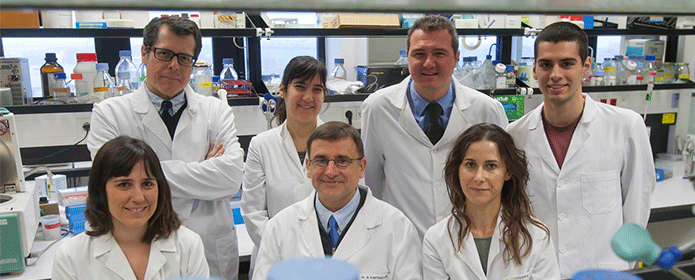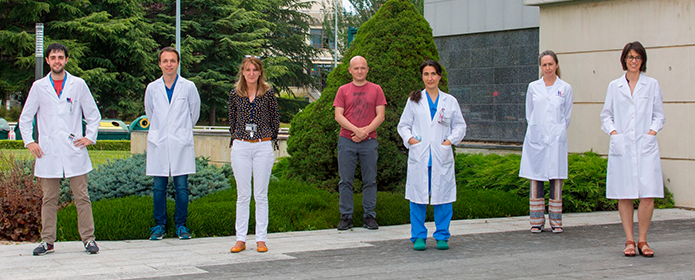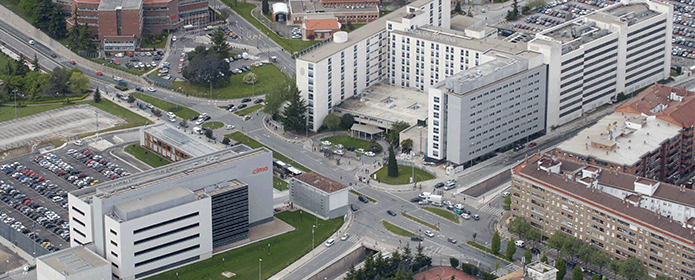The CIMA and Moderna Therapeutics develop a new technology to treat acute intermittent porphyria.
It acts on the origin of this metabolic disease of genetic origin that produces painful intermittent crises and currently has no effective treatment.

Scientists at research center Applied Medicine (CIMA) of the University of Navarra have developed a new messenger RNA (mRNA) technology that acts on the origin of the disease and rapidly corrects the symptoms of acute intermittent porphyria in preclinical models. The results, published yesterday in the scientific journal Nature Medicine, are the product of partnership with the biotechnology company Moderna Therapeutics (Cambridge, Massachusetts. USA).
Acute intermittent porphyria is a rare, or orphan, disease Genetics caused by the inability of the liver to metabolize porphyrin precursors. It presents as painful intermittent crises and can lead to significant neurological damage and even require liver transplantation. In these patients the crises can be triggered by certain medications, strict diets or prolonged stress. However, the main triggering factor is the female hormones associated with the menstrual cycle, which is why it occurs especially in young women with important work and family responsibilities.
"Currently, some drugs are able to control its symptoms, but there is no specific treatment that fights the origin of the disease," says Dr. Antonio Fontanellas, lead author of article. According to Dr. Fontanellas, researcher in porphyrias of the Hepatology Program at CIMA and member of research center Biomedica en network de Enfermedades Hepáticas y Digestivas (CIBERehd), "the research we have developed sample the efficacy of mRNAs for the treatment of acute intermittent porphyria".
mRNA is the molecule that connects the information accumulated in genes with the production of proteins necessary for the proper functioning of the cell. "Our work suggests that administration of this mRNA wrapped in proprietary lipid nanoparticles (fat microdroplets) can restore in less than two hours the activity of the deficient enzyme in the liver of porphyria mice. It was also found to protect against core topic features of the disease, such as pain, hypertension and motor disability. Another advantage of this technology is the possibility of repeating its administration as many times as necessary to avoid the appearance of new crises," says Dr. Fontanellas.
"In this joint work we demonstrate that mRNA technology restores enzyme deficiency within liver cells and normalizes disease markers during seizures," explains Dr. Paolo Martini, director scientist in Moderna Therapeutics' Rare Disease Program. "These data further support our current efforts in the field of rare metabolic diseases, where mRNA could enable a particular tissue to produce therapeutic levels of a functional protein."
Moderna Therapeutics is pioneering finding and development mRNA therapeutics and vaccines, an entirely new class of drugs that provide the information to cells to produce intracellular or secreted proteins that can have a therapeutic or preventive benefit for both patients and healthy people. With its innovative platform, Moderna Therapeutics is creating mRNA drugs for a wide range of diseases and conditions, in many cases addressing targets unattainable with current technology or areas of medical need that lack suitable products. Moderna is developing its mRNA drugs for infectious, rare, cardiovascular and immuno-oncology diseases through unique programs and collaborations with strategic partners.
The Hepatology Program at CIMA of the University of Navarra is a group of research with an extensive worldwide track record in basic and translational hepatology. This expertise has been forged over several decades from the department of Internal Medicine at Clínica Universidad de Navarra, and more recently also at CIMA. "In the program we dedicate our efforts to identifying therapeutic targets and developing strategies for the prevention and treatment of metabolic liver diseases such as fatty liver and porphyria, cirrhosis, and liver tumors," states Dr. Matías Ávila, director of the program.




